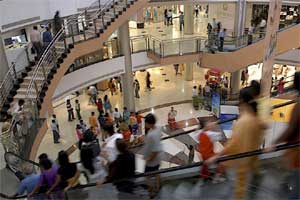Unable to pull in the crowds, more than two dozen malls covering a combined space of around 4 million sq ft are expected to shut shop in the next few years. “We estimate around 14 malls, having a combined space of 3.5-4.5million sq ft, to withdraw from retail operations,” Jones Lang LaSalle forecast.
Indeed, weak consumer demand coupled with a proliferation of malls has driven up the average vacancy rate to a high 20% across major Indian cities — it was around 13% a couple of years ago. And a third of all mall space in Pune and Ahmedabad — traditionally the graveyards of Indian retail — remains unoccupied. Developers agree this is worrying especially since there’s been a 40% decline in the supply of space over the past year or so but past supply remains an overhang. In Pune, for instance, malls have crowded each other out. As Sanjay Dutt, MD, Southeast Asia, at Cushman & Wakefield, points out, for a mall to be viable it needs a primary catchment area of 2 to 3 km.
“In Pune’s Nagar Road four malls have come up on the same road, eating into each other’s primary catchment. In Aundh, another micro-market in Pune, there’s just Westend so that is occupied to the extent of 80%,” Dutt said. Pulse Mall on Nagar Road, Ishanya Mall in Yerawada, Center Port Mall on Ganeshkhind Road and Koregaon Park Plaza are the malls in Pune that are over 50% vacant.
Many malls are either converting themselves into grade B office spaces or they’re being pulled down. In Pune, the Kakade Center Port on Ganeshkhind Road, Jewel Square in Koregaon Park and East Court in Viman Nagar are among the malls that will convert part of their space into offices.
In Hyderabad’s Metropolitan Mall in Banjara Hills, this change has already happened. At the Ansal Plaza on Khel Gaon Marg in south Delhi, 70% of the space is occupied by offices. In the NCR region of Gurgaon, MGF Metropolis Mall on MG Road has converted its top decks to house offices while the lower levels are rented out to retail clients.
JLL points out that there’s so much churn in malls these days, it “appears to have become a new normal”. The churn has been attributed to retailers exiting as soon they find they’re faring badly and to owners proactively asking non-performing brands to exit and replacing them with stronger tenants. “On average, when business is good, churn rates of around 15-18% have been recorded. This is abnormally high considering it used to be 4-8% in well-managed malls in the initial period,” JLL observed.


